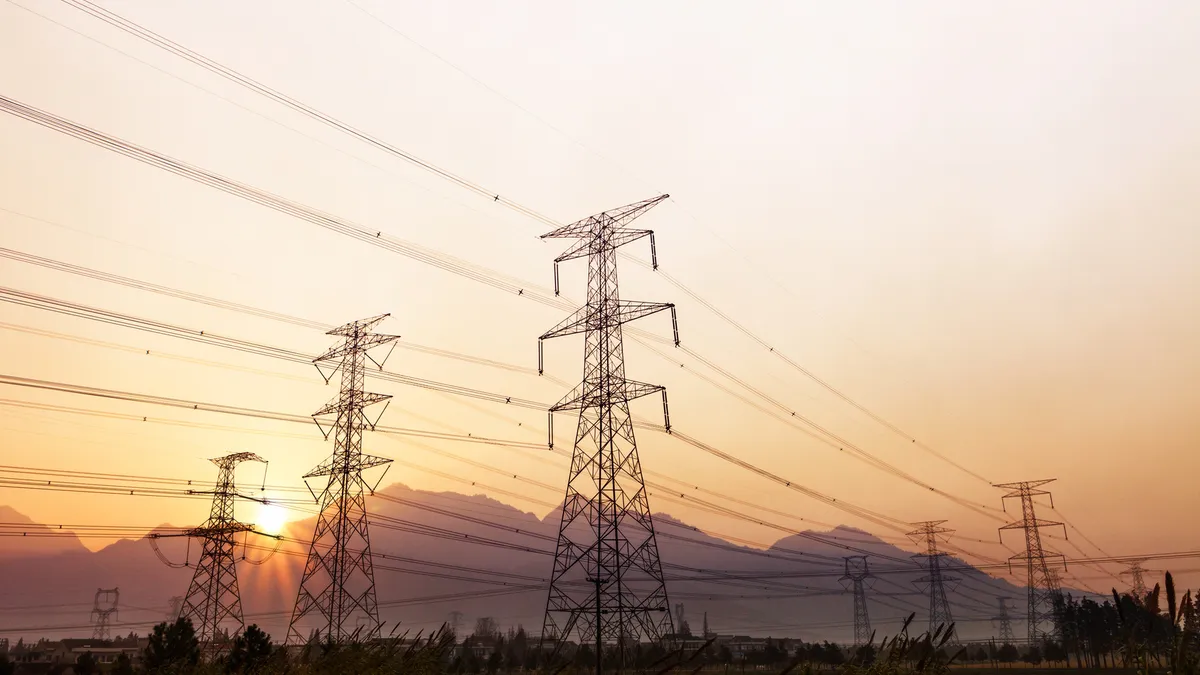Dive Brief:
- Federal regulators on Friday sent a report to Congress outlining opportunities and barriers around transmission development, in a move clean energy advocates see as a "strong endorsement" of the need for large scale transmission.
- The report, sent to the U.S. House and Senate by staff of the Federal Energy Regulatory Commission, concluded in part that high voltage transmission can improve reliability and "improve frequency response and ancillary services throughout the existing system," among other things.
- Large-scale transmission planning is often cited by clean energy advocates as an essential tool to bringing more renewable energy onto the power grid, but barriers to growth include navigating regulatory processes across the federal, state and local levels, the report notes.
Dive Insight:
As states and utilities add higher levels of renewable energy to their systems, better interregional transmission will become essential in order to maximize the value of those resources, some clean energy advocates say. Increased electrification as well as growing demand for renewable energy will require transmission investments of $3 billion to $7 billion per year through 2030, according to the Brattle Group.
29 states plus Washington, D.C., have some form of renewable portfolio standard in place, and another 23 states plus the District have greenhouse gas reduction measures in place. FERC's Friday report finds that building out transmission could help states and municipalities reach those goals.
"New high voltage transmission lines can increase the availability of carbon-free energy and facilitate the replacement of energy generated by fossil fuels, thereby helping states meet their targets by reducing [greenhouse gas] emissions," the report finds.
As high voltage transmission lines are able to carry large amounts of power longer distances, the report says those lines could potentially bring large amounts of wind and solar power from more rural areas where the generation is often located to areas with higher power demand. The American Council on Renewable Energy (ACORE) and Americans for a Clean Energy Grid (ACEG) in June launched a campaign to upgrade the national transmission system and bring more carbon-free resources online.
"High-voltage transmission helps integrate renewables on the grid in a cost-effective, resilient manner, and we're pleased to see FERC recognize its important benefits," said Gregory Wetstone, president and CEO of ACORE in a statement. The report defines "high voltage transmission" as alternating current transmission lines greater than or equal to 345 kV and direct current transmission lines as greater than or equal to 100 kV.
But barriers to building those lines include lengthy state or multistate regulatory processes that can take over 10 years in some instances, the report found. High voltage transmission projects require authorizations and reviews from various state, federal and local authorities, often leading to these delays.
One of the largest opportunities for high voltage transmission is colocation, according to transmission experts, and the report is an "important first step" in identifying some of those issues, Dan Belin, energy market lead at consulting firm VHB said in an email. "But the important work will come when facing the barriers of permitting authority that the report aptly identifies."
In particular, barriers to colocating include restrictions set by the Federal Highway Administration and state transportation agencies, some of which expressly prohibit transmission construction along transportation corridors. Highways in general have been more difficult to work with than railroads, for example, according to Rob Gramlich, executive director of ACEG.
"We are beginning to see some use of rail where railway companies are working well with developers. We need a little more attention on highways, to encourage state Departments of Transportation to allow transmission and energy generation sources to use the very valuable rights of way that are otherwise under-utilized," he said in an email.
Another obstacle the report points to is Order 1000, a 2011 rule issued by FERC that was intended to address barriers to transmission.
"Order 1000 has not really lived up to expectations," Brattle Principal Johannes Pfeifenberger said. The order makes it "almost impossible" to build interregional transmission projects out to the level that is needed to facilitate the energy transition, he said, instead mostly just allowing for local utilities to build out projects.
"Interregional Planning is not happening. And the interregional planning processes do not exist and are not ... effective and they're not even functional," said Pfeifenberger. "And that is probably the area where the biggest benefits will be in terms of the grid of the future."
Correction: Pfeifenberger said interregional planning processes do not exist. An earlier version of this story misquoted him.















